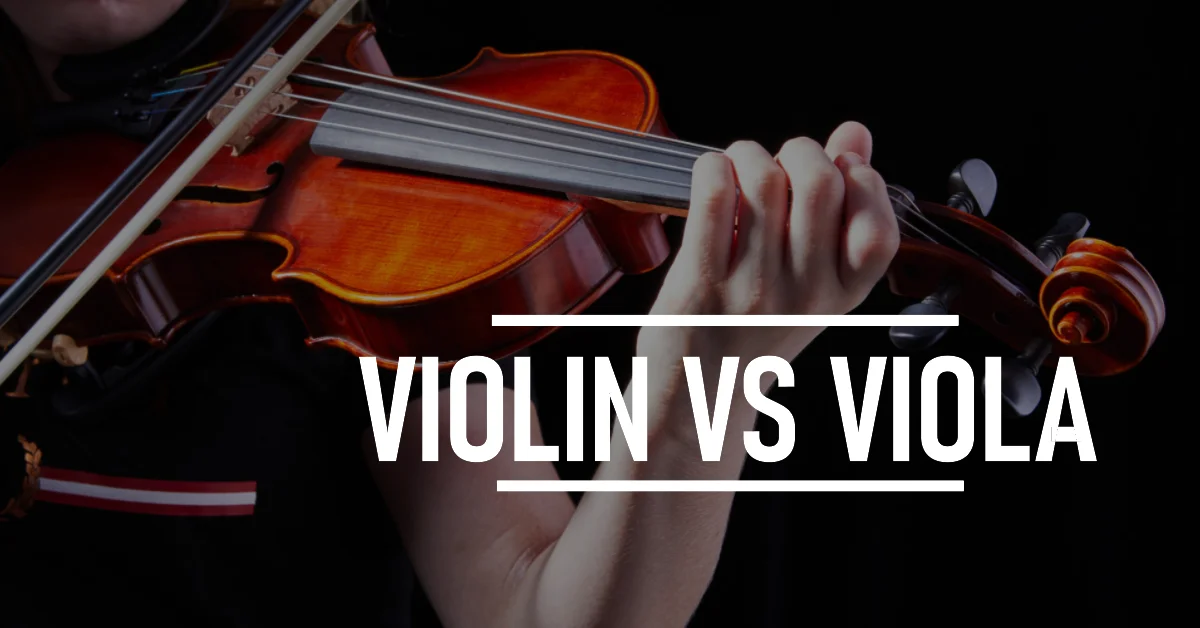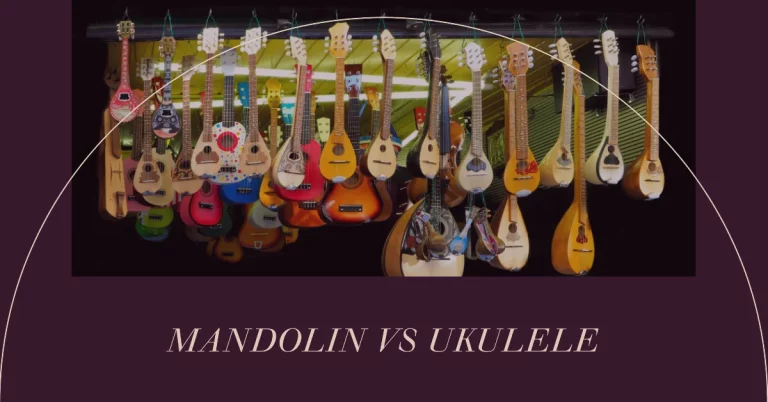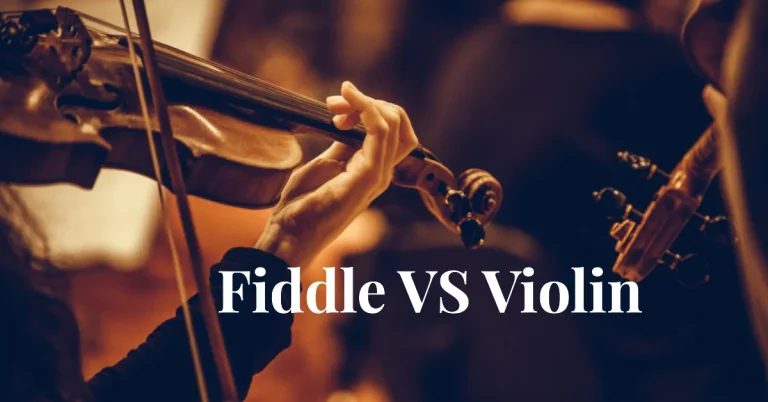What is difference between violin and viola
Did you know what is differences between a violin and a viola? They look similar at first glance, these two string instruments have distinct characteristics .
As a music enthusiast, I often find myself immersed in the beautiful world of . The bowed string family consists of four instruments: violin, viola, cello, and double bass. Today, I want to share my insights on two instruments viola and the violin.
Here is a table of the key differences between a violin and a viola:
| Feature | Violin | Viola |
|---|---|---|
| Size | 14 inches (35.5 cm) | 15-17 inches (38-43 cm) |
| Tuning | G3, D4, A4, E5 | C3, G3, D4, A4 |
| Sound | Brighter, higher-pitched | Fuller, mellower, lower-pitched |
| Clef | Treble clef | Alto clef |
| Price | Less expensive | More expensive |
| Popularity | More popular | Less popular |
A Brief History of the Violin and Viola

Both stringed instrument has a rich history dating back to 16th century. Originating from Italy, these instruments have evolved over time, with changes in their design, materials, and playing techniques. The viola was initially known as the ‘viola da braccio’ or ‘arm viola’, distinguishing it from the ‘viola da gamba’ or ‘leg viola’, a different string instrument played between the legs.
Physical Differences between viola vs violin
Size

Main differences is their size. A full-size violin typically measures 14 inches in length. A full-size viola is usually found between 15 to 16.5 inches. This size difference make to their distinct sounds.
This variation in size influences not only their overall sound but also the technique required to play each instrument.
Viola is generally wider than that of the violin, giving it a more robust appearance.
Bow
The bows for viola and violin also differ. A viola bow generally has a slightly heavier frog (the end part of the bow that is held) and is designed to produce a richer, deeper sound due to the viola’s larger size and thicker strings.
These differences in bow and string characteristics significantly impact the overall timbre and expressive possibilities of each instrument.
Strings
Both viola and violin have four strings, but they are tuned differently. The violin strings from lowest to highest are G, D, A, and E, while the viola strings are C, G, D, and A. This difference in tuning contributes to their unique sound ranges.
Sound and Tone
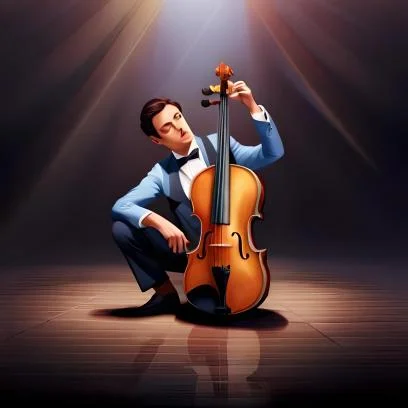
The viola produces a deeper, warmer, and more mellow sound, often described as being closer to the human voice. This is due to its larger size and lower tuning. the violin has smaller size and higher tuning, produces a brighter and more brilliant sound.
- Both the violin and the viola employ four strings, but their pitch arrangement differs.
- The violin tune is G-D-A-E from and viola tune is C-G-D-A.
- This variation in tuning affects the way these instruments are played and the range of sounds they can produce.
“Playing the viola is like making love: when you get it right, you know it and so does the audience.”-Pinchas Zukerman
Playing Technique viola and violin

Playing techniques for the viola and violin are similar, but there are subtle differences due to their size difference. Viola players need to stretch their fingers a bit more on the fingerboard and use more arm weight to produce sound due to the thicker strings.
Reading Music: Treble Clef vs Alto Clef
Violin music is written in the treble clef, while viola music is written in the alto clef. This means that the same note on a stave will represent a different pitch for each instrument.
Role in the Orchestra
In an orchestra, violins often carry the melody and are divided into two sections: first and second violins. Violas, on the other hand, often play a more harmonic or supportive role, providing depth and richness to the overall sound.
“Playing in an orchestra or ensemble is a collaborative effort, and each musician’s role is vital to the success of the group as a whole.”
Notable Composers and Performers
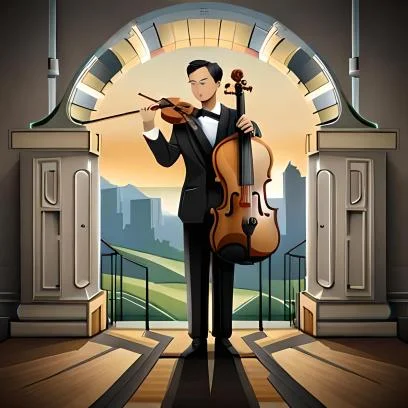
Veneration of violin virtuosos: Icons of the bow
- Throughout history, virtuosic violinists have graced the stage, mesmerizing audiences with their technical prowess and emotional interpretations.
- From famous violinists like Niccolò Paganini to current legends like Itzhak Perlman, their amazing talent has made a lasting impact on the world of music.
Celebrated violists: Shattering stereotypes and leaving a mark
- While less celebrated compared to their violin counterparts, violists have made significant contributions to the world of music.
- Renowned violists such as William Primrose and Lionel Tertis have harnessed the viola’s unique voice, captivating audiences and elevating the instrument’s prominence.
Pioneers integrating the two instruments in groundbreaking music
- Creative musicians and composers have connected the violin and the viola, making innovative music that highlights the different ways these instruments can express themselves.
- From Igor Stravinsky’s “Apollon Musagète” to Béla Bartók’s “44 Duos for Two Violins,” these innovative compositions challenge traditional notions and push the boundaries of musical expression.
Famous Musicians violin and viola
| Instrument | Musician | Nationality | Years active |
|---|---|---|---|
| Violin | Niccolò Paganini | Italian | 1782-1840 |
| Violin | Jascha Heifetz | Russian-American | 1901-1987 |
| Violin | David Oistrakh | Ukrainian-Russian | 1908-1974 |
| Violin | Yehudi Menuhin | American-British | 1916-1999 |
| Violin | Anne-Sophie Mutter | German | born 1963 |
| Viola | Lionel Tertis | English | 1876-1975 |
| Viola | William Primrose | Scottish | 1904-1982 |
| Viola | Vadim Borisovsky | Russian | 1943-2017 |
| Viola | Lillian Fuchs | American | 1911-1995 |
| Viola | Walter Trampler | Austrian-American | 1915-2011 |
Choosing violin or viola
Deciding between the violin and viola depends on what you like. If you want a bright sound and play beautiful melodies, go for the violin. But if you prefer deeper tones and playing harmonies, the viola might be more your style. It’s common to switch between the two and it can be a fun challenge.
Frequently Asked Questions
While they look similar and belong to the samefamily of string instruments, violins and violas are not the same. They differ in size, sound, tuning, and the clef used for their music.
Neither instrument is “better” than the other. It really just depends on what kind of sound and size you like, and the role you want to have in a group of musicians.
Conclusion
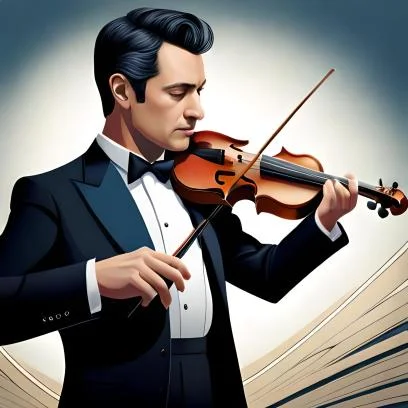
The viola and violin, while similar in appearance, each possess their unique characteristics and beauty.
Both the violin and the viola play important roles in the world of music. The violin has bright and melodic tones, while the viola produces a rich and mellow sound.
I hope this comparison has provided you with a deeper understanding of these two wonderful instruments.
Remember, whether you choose the violin or the viola, the journey of learning an instrument is a rewarding one filled with growth, challenges, and beautiful music.
Happy playing!
Note: This post contains jokes about violas and violins. These are meant in good fun and are a part of the long-standing tradition of humor in the music world. No offense is intended towards violists or violinists.
Did you hear about the violist who bragged he could play 32nd notes? The rest of the orchestra didn’t believe him, so he showed them. “See? I play one every 32 measures!”
Why don’t violinists tell viola jokes? They can’t remember them!
Refence Link

